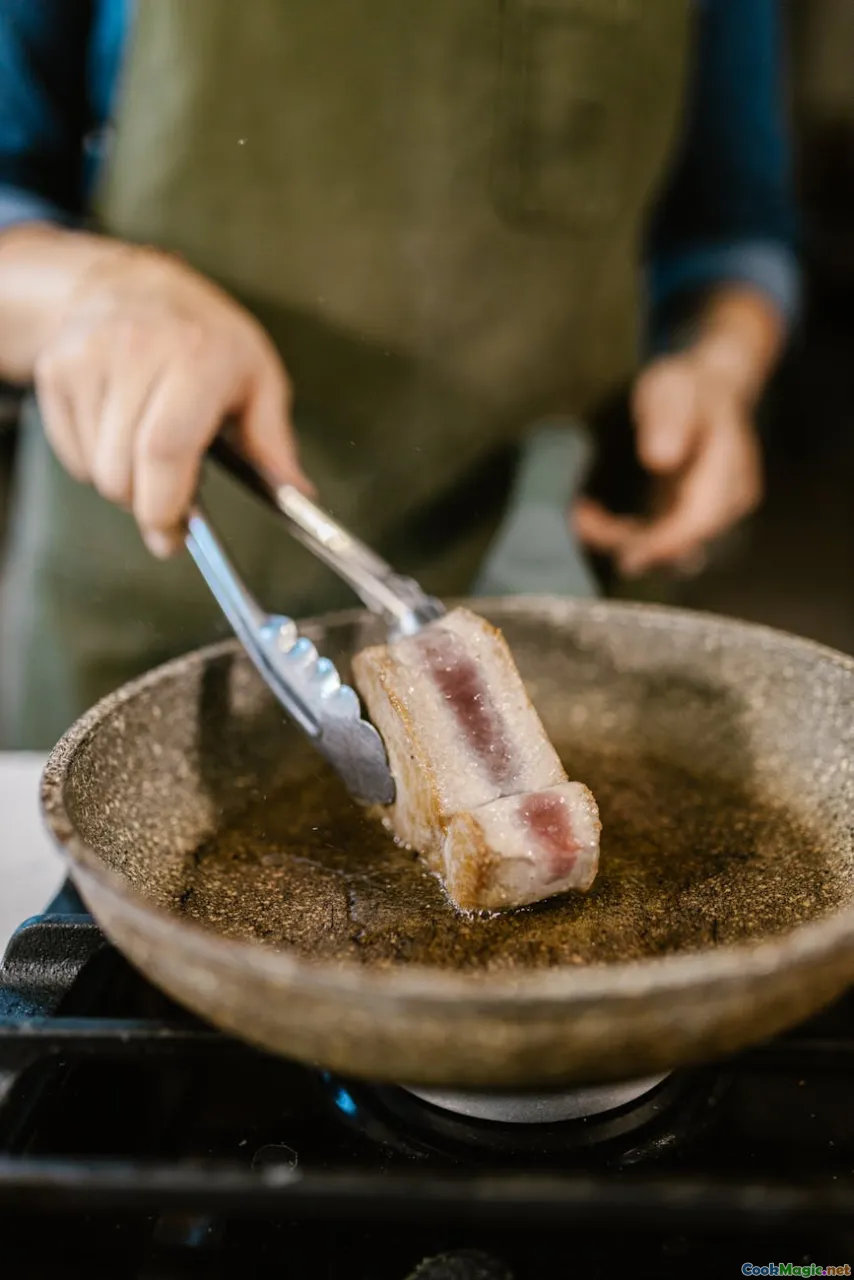Tuna Preparation Tips from Solomon Islands Chefs
8 min read Discover authentic tuna preparation secrets from Solomon Islands chefs, blending tradition, flavor, and craftsmanship to elevate your seafood experience. May 27, 2025 06:00
Tuna Preparation Tips from Solomon Islands Chefs
Introduction: A Treasure of the Pacific
Nestled amidst the azure waters of the South Pacific lies a culinary jewel—Solomon Islands—a place where the ocean’s bounty shapes culture, tradition, and daily life. Among its treasures, tuna stands out as a prized ingredient, revered not just for its flavor but for its deep cultural significance. Imagine the vibrant markets of Honiara, where fishermen bring in shimmering, freshly caught tuna, their glistening bodies a testament to the islanders' mastery over the sea.
For Solomon Islands chefs, tuna is more than just seafood; it’s a symbol of life, resilience, and community. Their techniques, honed over generations, transform this humble fish into culinary masterpieces that evoke the spirit of the islands. Today, we delve into the expert tips, cultural insights, and personal stories behind preparing tuna in the Solomon Islands, offering you a window into their rich gastronomic heritage.
The Cultural Significance of Tuna in Solomon Islands
A Heritage of the Sea
Tuna fishing in the Solomon Islands dates back centuries, integral to the islanders’ livelihood and social fabric. Traditionally, villages organized communal fishing expeditions, employing simple yet effective methods like trolling and handlines, all while respecting the ocean’s delicate balance.
Rituals and Respect
Culturally, tuna is more than sustenance; it’s a gift from the sea, often accompanied by rituals that honor the fish and the ocean. These customs influence how tuna is prepared and consumed—always with reverence and gratitude.
Modern Day Practices
Today, although modern fishing techniques and international markets have expanded the reach of Solomon Islands tuna, traditional methods still influence local culinary practices. Chefs balance innovation with tradition, preserving the authenticity that makes their tuna dishes so distinctive.
Selecting the Perfect Tuna
Freshness is Key
The foundation of great tuna dishes begins with selecting the freshest fish. Solomon Islands chefs emphasize the importance of buying tuna that is vibrant in color, firm to the touch, and has a clean, oceanic smell.
Types of Tuna
The most common species used in local dishes include skipjack, yellowfin, and bigeye tuna. Each has unique qualities—yellowfin’s rich, meaty texture and flavor, and skipjack’s lighter, more delicate taste.
When to Buy
Peak tuna is usually available right after a successful fishing trip, often caught early in the morning. Chefs prefer to purchase directly from fishermen or local markets to ensure freshness and support local communities.
Essential Tuna Preparation Techniques
1. Cleaning and Filleting
Tools and Environment
A sharp, high-quality filleting knife is essential. Clean workspace and proper hygiene are crucial to prevent contamination.
Technique
Start by removing the head and tail. Make a precise cut along the backbone, then gently separate the flesh from the bones, ensuring minimal waste. Solomon Islands chefs emphasize a smooth, confident motion to achieve clean fillets that highlight the fish’s natural beauty.
2. Marinating with Local Flavors
Ingredients
Coconut milk, lime or lemon juice, ginger, chili, and native herbs like basil or lemon grass are common marinades.
Process
Marinate tuna slices briefly—no more than 30 minutes—to infuse them with aromatic flavors while maintaining their fresh texture. This step enhances the taste and tenderizes the fish.
3. Searing and Grilling
Technique
High heat searing preserves the tuna’s moisture and creates a flavorful crust. Grilling over open flames imparts a smoky aroma that complements the fish’s natural sweetness.
Tips
Ensure the grill is hot before placing the tuna. Do not overcook—aim for a rare to medium-rare interior, which retains the fish’s tenderness.
4. Curing and Preservation
In some coastal villages, curing tuna with salt and native herbs is a traditional method to preserve the fish for longer periods, especially during fishing seasons.
Signature Solomon Islands Tuna Dishes
Saku Tuna with Coconut and Lime
Slices of fresh tuna lightly seared and served with a sauce made from coconut milk, lime juice, and native herbs—an explosion of tropical flavors.
Tuna Tataki with Ginger and Chili
Thinly sliced, quickly seared tuna topped with a spicy ginger-chili dressing, showcasing a perfect balance of heat, acidity, and umami.
Grilled Tuna Skewers
Marinated chunks threaded onto bamboo skewers and grilled over open flame, often enjoyed with a side of sweet potato or taro.
Canned Tuna Salad with a Pacific Twist
A simple yet flavorful salad combining canned tuna, fresh coconut, lime, and local vegetables, embodying the island’s resourcefulness.
Personal Insights and Chef Reflections
The Art of Respectful Preparation
Many Solomon Islands chefs speak of the importance of approaching tuna preparation with respect—honoring the fish, the sea, and the community. Their techniques are not just about taste but about preserving a cultural identity.
The Joy of Sharing
Food is a communal act. Preparing tuna is often a shared experience—whether at a family gathering or a village feast—fostering bonds and celebrating life.
Evolution and Innovation
While tradition guides their methods, chefs continuously innovate—adding local twists, experimenting with new marinades, or modern cooking techniques—to keep their cuisine vibrant and relevant.
Final Thoughts: Embracing Solomon Islands’ Tuna Heritage
Embracing the art of tuna preparation from Solomon Islands chefs offers more than culinary knowledge—it provides a cultural journey, connecting us to centuries of maritime tradition and island life. Their techniques remind us that cooking is an act of respect, creativity, and community.
Whether you’re a home cook or a professional chef, incorporating these insights can elevate your seafood dishes, infusing them with the soulful spirit of the Pacific. So next time you handle tuna, think of the ocean’s bounty, the generations of wisdom, and the stories waiting to be told through each perfectly prepared fillet.









